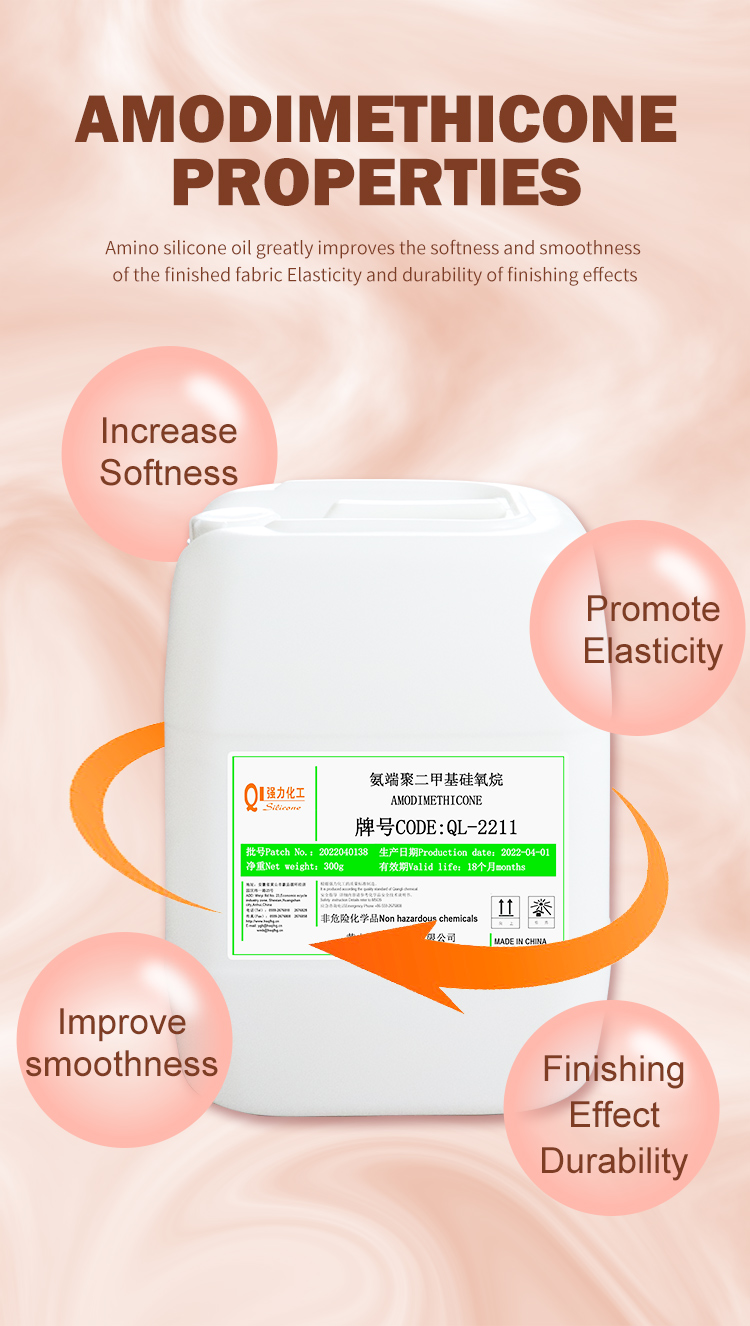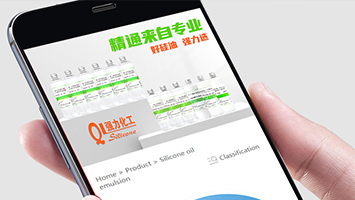With the expansion of the production scale of silicone monomers and the in-depth research on the follow-up products of silicone, people's understanding of silicone surfactants has been further deepened, the variety of silicone surfactants has continued to increase, and the application fields have continued to expand.
1. Cationic surfactant
Amino-modified polysiloxane (referred to as amino silicone oil) and amino silane are the most typical, most used and most widely used organosilicon cationic surfactants. Amino groups are divided into primary, secondary, tertiary and quaternary ammonium groups. Because amino is hydrophilic, amino silicone oil is easy to be made into microemulsion, and amino silicone oil emulsion is the most commonly used softener in textiles; however, amino silicone oil has the problems of easy yellowing at high temperature and hydrophobicity of the finished fabric. The yellowing problem is mainly solved by changing the amino group, such as replacing the primary amino group with cyclohexylamino or piperazinyl. After replacing with cyclohexylamino, the flexibility decreased; after replacing with piperazinyl, the flexibility did not decrease, but the price was more expensive. In addition, acid anhydrides, haloalkanes, acrylic acid, etc. can also be used to block primary amino groups; according to the author's experiments, the best blocking effect is epoxy group; this can not only improve the yellowing phenomenon, but also improve the slipperiness. The author has tried several epoxy modifiers, all of which have good results. There are many ways to improve the hydrophilicity of amino silicone oil: one is to add hydrophilic polyether, carboxylic acid group and sulfonic acid group to the amino silicone oil molecule at the same time; The third is to graft the polyether with reactive groups to amino silicone oil. Some of these methods have good hydrophilicity, but are not soft and slippery enough; some are soft and slippery, but not hydrophilic enough. It is difficult to make amino silicone oil not reduce the softness and have good hydrophilicity. The QL-2211, QL-2212, QL-2213 of Qiangqi Chemical have become mature, and you can consult and ask for the price.

Cationic silicone surfactants are mainly used in softener lotions, skin care, hair care and hairdressing products in the daily chemical industry. The amino silicone oil microemulsion is added to the liquid detergent, because the amino silicone oil has a weak positive charge and the fabric has a negative charge, during the washing process, the amino silicone oil can be automatically adsorbed to the fabric. Octadecyltrimethylammonium chloride quaternary ammonium salt softener is easy to flocculate with anionic surfactants and can only be added in the fabric rinsing stage; while aminosilicone oil microemulsion does not have this problem and can be combined with anionic surface active agents. Active agent compatibility. It is more suitable to use anionic aminosilicone microemulsion.
Cationic silicone surfactants, especially quaternized polysiloxanes, are the best conditioning treatments for hair care. The shampoo formulated with polysiloxane quaternary ammonium salt has the advantages of softness, smoothness, antistatic and easy combing. However, it should be noted that the density of cations should not be too high and the dosage should not be too much, otherwise it is easy to cause accumulation. In order to make a conditioner with excellent comprehensive performance, it is necessary to combine hydrophilic and antistatic components. Ideal too. The hydrophilic, antistatic polyether and phosphate ester modified polysiloxane quaternary ammonium salt shampoo conditioner developed by our institute has been put into production; with the continuous improvement and improvement of product quality, the market share will become larger and larger.
Amino silicone oils can also be used as shampoo conditioners. Clear shampoos require fairly good solubility of the conditioner in the shampoo. Amino silicone oil with a certain ammonia value can be made into a transparent microemulsion, and with appropriate anionic surfactants, it can be made into a transparent shampoo.
2. Nonionic surfactants
Non-ionic silicone surfactant mainly refers to polyether modified silicone oil. In the textile industry, it is mainly used as a hydrophilic finishing agent and a defoaming agent, such as a hydrophilic silicone fabric finishing agent CGF and a water-soluble polyether modified silicone oil defoaming agent. The use of hydrophilic polyether modified silicone oil in the daily chemical industry is mainly as a hydrophilic skin care and hair conditioner.
An important property of polyether-modified silicone oil is that it can significantly reduce the surface tension of aqueous or non-aqueous systems; therefore, it has great application prospects in liquid detergents and even in tertiary oil recovery systems.
Another important use of nonionic silicone surfactants is as a silicone oil emulsifier. Stable silicone oil emulsion can be made with 1 % polyether modified silicone oil.



